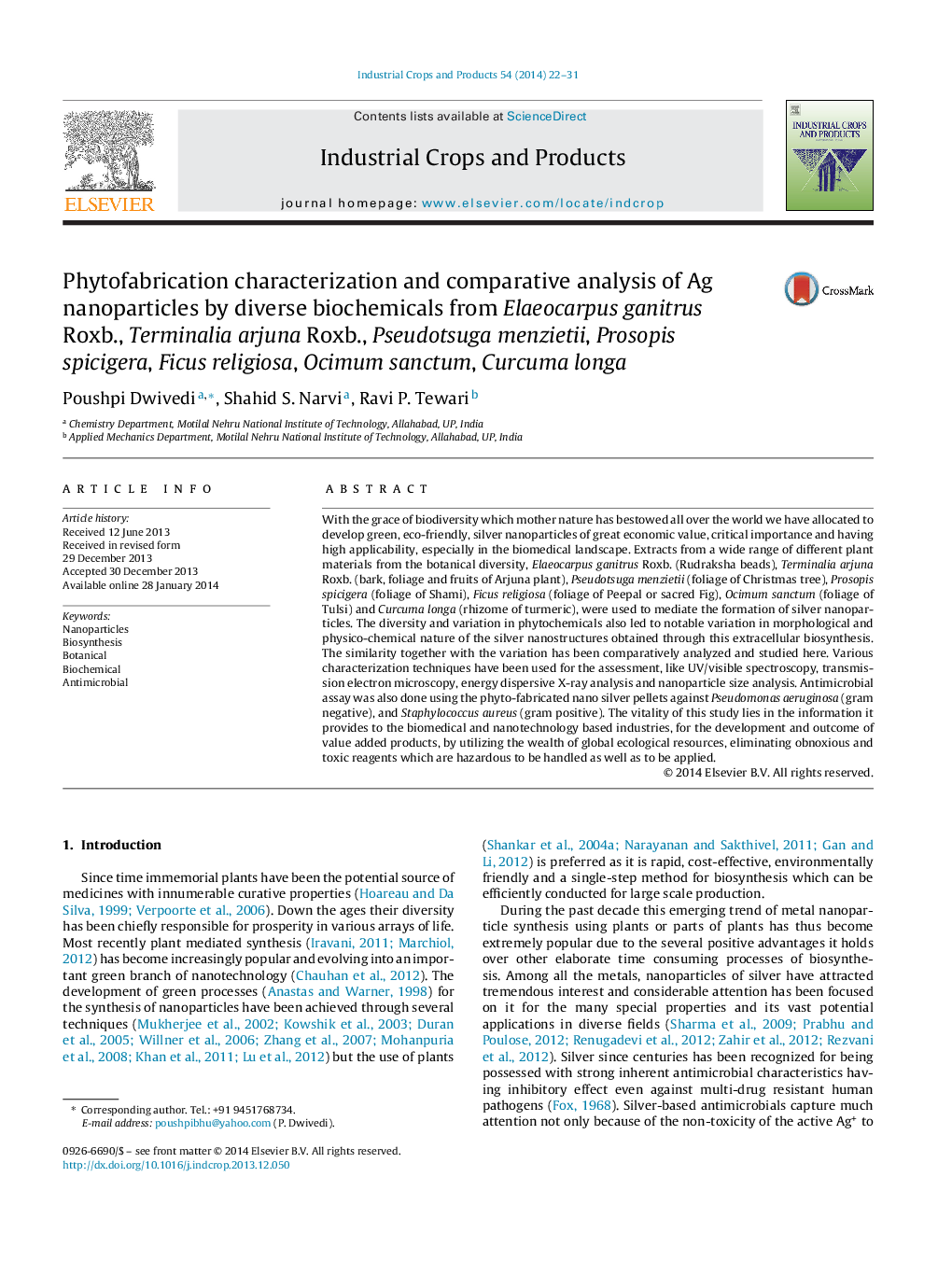| Article ID | Journal | Published Year | Pages | File Type |
|---|---|---|---|---|
| 4513352 | Industrial Crops and Products | 2014 | 10 Pages |
•Phytofabrication of silver nanoparticles from diverse plant biochemicals.•Developed antimicrobial silver nanoparticles have varied applications.•Characterization and comparative analysis of silver nanoparticles with antimicrobial assay.
With the grace of biodiversity which mother nature has bestowed all over the world we have allocated to develop green, eco-friendly, silver nanoparticles of great economic value, critical importance and having high applicability, especially in the biomedical landscape. Extracts from a wide range of different plant materials from the botanical diversity, Elaeocarpus ganitrus Roxb. (Rudraksha beads), Terminalia arjuna Roxb. (bark, foliage and fruits of Arjuna plant), Pseudotsuga menzietii (foliage of Christmas tree), Prosopis spicigera (foliage of Shami), Ficus religiosa (foliage of Peepal or sacred Fig), Ocimum sanctum (foliage of Tulsi) and Curcuma longa (rhizome of turmeric), were used to mediate the formation of silver nanoparticles. The diversity and variation in phytochemicals also led to notable variation in morphological and physico-chemical nature of the silver nanostructures obtained through this extracellular biosynthesis. The similarity together with the variation has been comparatively analyzed and studied here. Various characterization techniques have been used for the assessment, like UV/visible spectroscopy, transmission electron microscopy, energy dispersive X-ray analysis and nanoparticle size analysis. Antimicrobial assay was also done using the phyto-fabricated nano silver pellets against Pseudomonas aeruginosa (gram negative), and Staphylococcus aureus (gram positive). The vitality of this study lies in the information it provides to the biomedical and nanotechnology based industries, for the development and outcome of value added products, by utilizing the wealth of global ecological resources, eliminating obnoxious and toxic reagents which are hazardous to be handled as well as to be applied.
Graphical abstractFigure optionsDownload full-size imageDownload as PowerPoint slide
